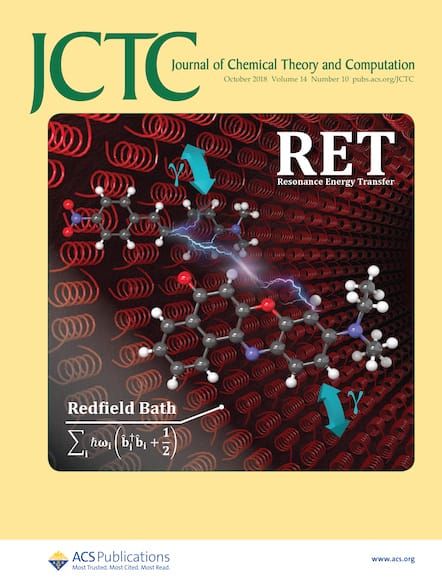Modeling Enzyme Reaction and Mutation by Direct Machine Learning/Molecular Mechanics Simulations.
IF 5.7
1区 化学
Q2 CHEMISTRY, PHYSICAL
引用次数: 0
Abstract
Accurately modeling enzyme reactions through direct machine learning/molecular mechanics simulations remains challenging in describing the electrostatic coupling between the QM and MM subsystems. In this work, we proposed a reweighting ME (mechanic embedding) REANN (recursively embedded atom neural network) method that trains the potential and point charges of the QM subsystem in vacuo. The charge equilibration approach has been encoded into REANN to ensure conservation of the total charge of the QM subsystem. Electrostatic coupling is measured by point charges, and the polarization of the MM subsystem on the coupling can be corrected by thermodynamic perturbation after molecular dynamics simulations. We first constructed the REANN surfaces of potential energy and charges for the acylation of cyclooxygenase-1 (COX-1) and cyclooxygenase-2 (COX-2) by aspirin. These surfaces allowed us to reproduce the free energy curves of B3LYP/MM-MD with a chemical accuracy. Subsequently, they were successfully applied to R513A of COX-2, reproducing the free energy barrier simulated by B3LYP/MM MD with a difference of less than 0.5 kcal mol-1 and a speedup of 80-fold, revealing our method can predict the activity of mutants accurately and rapidly. This method is expected to be applied in virtual screening in the future.通过直接机器学习/分子力学模拟模拟酶反应和突变。
在描述QM和MM子系统之间的静电耦合时,通过直接机器学习/分子力学模拟准确地建模酶反应仍然具有挑战性。在这项工作中,我们提出了一种重加权ME(机械嵌入)REANN(递归嵌入原子神经网络)方法,该方法在真空中训练QM子系统的电势和点电荷。将电荷平衡方法编码到REANN中,以保证QM子系统的总电荷守恒。静电耦合是通过点电荷来测量的,通过分子动力学模拟后的热力学扰动可以修正MM子系统对耦合的极化。我们首先构建了阿司匹林酰化环氧化酶-1 (COX-1)和环氧化酶-2 (COX-2)的势能和电荷的REANN表面。这些表面使我们能够以化学精度重现B3LYP/MM-MD的自由能曲线。随后,它们成功地应用于COX-2的R513A,再现了B3LYP/MM MD模拟的自由能势垒,差异小于0.5 kcal mol-1,速度提高了80倍,表明我们的方法可以准确快速地预测突变体的活性。该方法有望在未来的虚拟筛选中得到应用。
本文章由计算机程序翻译,如有差异,请以英文原文为准。
求助全文
约1分钟内获得全文
求助全文
来源期刊

Journal of Chemical Theory and Computation
化学-物理:原子、分子和化学物理
CiteScore
9.90
自引率
16.40%
发文量
568
审稿时长
1 months
期刊介绍:
The Journal of Chemical Theory and Computation invites new and original contributions with the understanding that, if accepted, they will not be published elsewhere. Papers reporting new theories, methodology, and/or important applications in quantum electronic structure, molecular dynamics, and statistical mechanics are appropriate for submission to this Journal. Specific topics include advances in or applications of ab initio quantum mechanics, density functional theory, design and properties of new materials, surface science, Monte Carlo simulations, solvation models, QM/MM calculations, biomolecular structure prediction, and molecular dynamics in the broadest sense including gas-phase dynamics, ab initio dynamics, biomolecular dynamics, and protein folding. The Journal does not consider papers that are straightforward applications of known methods including DFT and molecular dynamics. The Journal favors submissions that include advances in theory or methodology with applications to compelling problems.
 求助内容:
求助内容: 应助结果提醒方式:
应助结果提醒方式:


